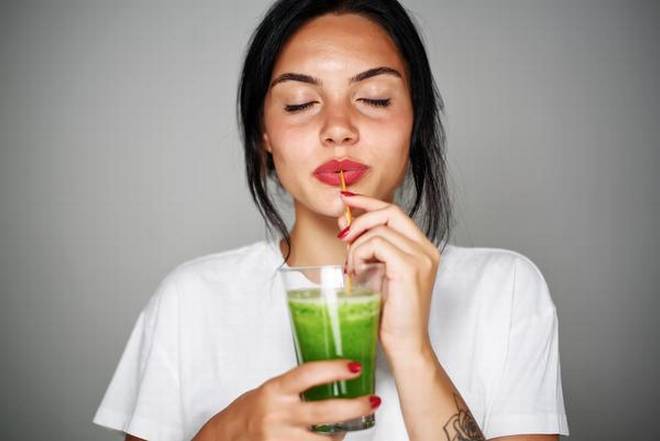Limes and lemons aren’t your only source of this power nutrient. Choose from a variety of fruits and vegetables to get your daily dose of vitamin C. Plus, some interesting recipes to help you along!
Say Vitamin C and you almost immediately think of oranges and lemons. But did you know that a single red guava has over 200 mg of the nutrient in 100 grams, which is almost over thrice as that in an orange. You get just about 64 mg from 100 gm of orange and 48 mg from 100 ml of lime juice according to the Indian Food Composition Tables.
“Vitamin C, also called ascorbic acid, is a water soluble vitamin that helps to improve immunity, aids in the synthesis of collagen (skin protein), and production of certain neurotransmitters (the body’s chemical messengers). It is not stored in the body and requires daily intake,”.
Guava
While 100 gm of gooseberry provides 247 mg, others like bell peppers (yellow, red, green: 120 mg), bitter gourd (50 mg), and raw mango (50 mg), can also provide the vitamin. Though it’s not possible to eat 100 gm of chillies, it’s good to know that they contain 90 mg of the vitamin.
The daily Recommended Dietary Allowance (RDA) of Vitamin C for adults is 65 to 90 mg per day. “We need Vitamin C to help in the absorption of iron from food,” says Gayathri V, a dietician based in Kochi. “A balanced diet, for example dosa or idli and sambar with seasonal vegetables for breakfast; a lunch platter of rice, green vegetables, and dal; a guava or papaya for dessert, ensures that you not only get Vitamin C, but also carbs, proteins, and fats.”
Green pepper / capsicum
Avoid caffeine as it inhibits Vitamin C absorption, stay hydrated, and cut down on meat, especially after you consume Vitamin C rich foods, advises Pradeepa Saravanan, dietician based in Coimbatore.“Include at least one serving of fresh fruits and vegetables per day in your diet. For example, a papaya salad with pomegranate, bell peppers, or banana. Vitamin C evaporates when exposed to heat, that’s why I recommend consuming 500 mg every day, not just during the pandemic but for life, to make up for the nutrient loss while cooking.”
One way of starting your day with a Vitamin C shot is to churn either three or four amla (gooseberries) or half a bitter gourd in the mixie with a handful of coconut bits and a jaggery to taste (nothing over a tablespoon). Mix with a little water, strain, and drink on an empty stomach.
Here are a few recipes, courtesy Dharshini Surendran, to help up Vitamin C levels:
Capsicum thokku
You can add diced capsicum to pasta or salad, or try this pickled version.
Ingredients:
2 capsicum ( any colour diced into pieces)
1 tomato
1 onion
1 tsp tamarind pulp
1 tsp urad dal
1 tsp coriander seeds
1 tsp jeera
3 red chillies
Himalayan Pink Salt to taste
Method:
In a pan, dry roast the coriander seeds, urad dal, jeera and red chilli. Add the chopped onion, tomato and saute it well. Add the sautéed onion, tomato, and dry roasted mix in a mixie jar and grind well. Add tamarind pulp.Finally add the salt as per taste and capsicum pieces and grind once again into a fine paste. This can be eaten along with rice, roti or dosa.
Sweet potato balls
Ingredients:
2 sweet potatoes (boiled)
2 handful of green gram sprouts
1/2 handful of grated raw mango
1/2 handful of grated carrot
1 onion finely chopped
2 tsp pepper powder
Salt as per taste
Method:
Peel the skin of sweet potato and mash it well. Add the green gram sprouts, carrot, raw mango, onion and mix well. Finally add salt and pepper and make into balls. As the potatoes are already boiled, it can be had directly. No need to bake.
Orange Rasam
Store green chillies in a cool, dark area, because chillies lose their Vitamin C when exposed to heat, light, and air.
Oranges
Ingredients:
1 cup orange juice
1 tbsp moong dal (soaked and boiled)
Chopped coriander leaves (for garnish)
1 tsp lemon juice
1 orange rind (grated)
3 slit green chillies
A few curry leaves
1 tsp mustard seeds
1/2 tsp asafoetida
Himalayan pink salt as per taste
1 tsp of cold pressed sesame oil cold pressed
1tsp rasam powder (optional)
Method:
In a pan, add 1 tsp sesame oil and season it with mustard seeds, asafoetida, and curry leaves. Sauté it well. Add the boiled moong dal and mix well. Add the salt and mix well and if required add rasam powder. Finally add the orange juice and rind. Now you can add lemon juice and garnish with coriander leaves and chillies.


